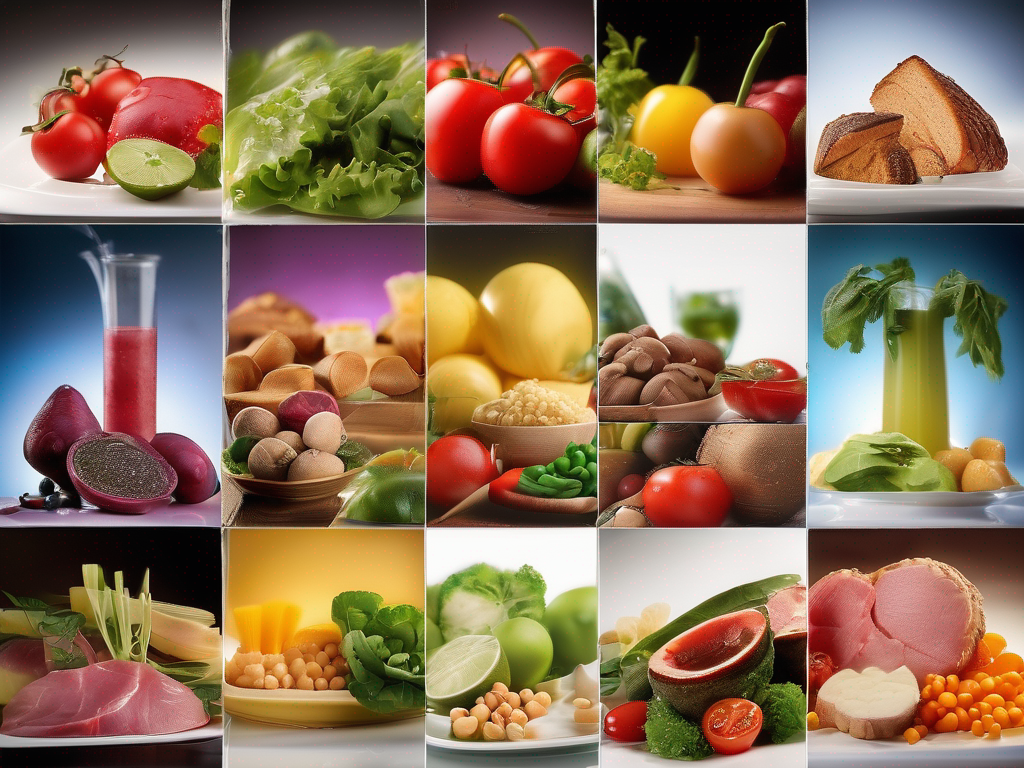
Can Lamb Chops All Cuts Including Shoulder Loin Rib Purchased Commercially Frozen Raw be refrozen after thawing?
Get Your Free Food Safety Cheat Sheet
30 most common foods with instant answers. Print it and stick it on your fridge—completely free!
Can Lamb Chops All Cuts Including Shoulder Loin Rib Purchased Commercially Frozen Raw be refrozen after thawing?
When it comes to food safety, the handling and storage of meat, including lamb chops, are crucial to prevent foodborne illnesses. One common question that arises is whether commercially frozen raw lamb chops can be refrozen after thawing. In this blog post, we will delve into the guidelines and best practices for handling frozen lamb chops to ensure they remain safe for consumption.
Understanding the Basics of Frozen Lamb Chops
Lamb chops, including cuts like shoulder, loin, and rib, are often purchased frozen from grocery stores or butchers. Frozen lamb chops can be a convenient option for meal planning and storage. However, it's essential to handle them properly to maintain their quality and safety.
Thawing Frozen Lamb Chops
When you're ready to cook frozen lamb chops, it's important to thaw them safely to prevent bacterial growth and ensure even cooking. Here are some recommended methods for thawing frozen lamb chops:
-
Refrigerator: Thawing lamb chops in the refrigerator is the safest method, although it requires some advance planning. Simply place the frozen chops on a plate or tray in the refrigerator and allow them to thaw slowly over 24-48 hours.
-
Cold Water: If you need to thaw lamb chops more quickly, you can submerge the sealed package in cold water. Change the water every 30 minutes to ensure a consistent temperature.
-
Microwave: While not the ideal method, you can use the microwave to thaw lamb chops if you're in a time crunch. Use the defrost setting and follow the microwave's instructions to prevent uneven thawing.
Refreezing Thawed Lamb Chops
Once you have thawed frozen lamb chops, it's essential to handle them properly to maintain their quality and safety. In general, it is not recommended to refreeze raw meat after it has been thawed. Here's why:
-
Quality: Each time you freeze and thaw meat, it can impact the texture and flavor. Refreezing lamb chops can result in a loss of quality and taste.
-
Safety: When meat is thawed, bacteria that may have been present can multiply if the meat is not cooked immediately. Refreezing can lead to potential foodborne illnesses if the meat is not handled correctly.
-
Nutritional Value: The nutritional content of meat can also be affected by multiple freeze-thaw cycles. To preserve the quality and nutrients in lamb chops, it's best to cook them after thawing without refreezing.
Tips for Handling Frozen Lamb Chops
To ensure the safety and quality of frozen lamb chops, here are some practical tips to keep in mind:
-
Proper Storage: Store frozen lamb chops in the coldest part of the freezer to maintain their quality. Use airtight packaging or freezer bags to prevent freezer burn.
-
Labeling: Properly label frozen lamb chops with the date of purchase to track how long they have been in the freezer. Use the "first in, first out" method to rotate your frozen meat supply.
-
Thawing Safely: Follow recommended thawing methods to prevent bacterial growth and ensure even cooking. Avoid leaving lamb chops out at room temperature for an extended period.
-
Cooking Thoroughly: When cooking lamb chops, ensure they reach the appropriate internal temperature to kill any harmful bacteria. Use a meat thermometer to check for doneness.
-
Leftovers: If you have cooked lamb chops that were previously frozen, you can safely refreeze them as long as they have been handled and cooked properly.
Conclusion
In conclusion, commercially frozen raw lamb chops, including various cuts like shoulder, loin, and rib, should not be refrozen after thawing. To maintain the safety and quality of frozen lamb chops, it's important to handle them properly from purchase to cooking. By following recommended thawing methods, storing them correctly, and cooking them thoroughly, you can enjoy delicious and safe lamb chops for your meals. Remember, when in doubt, it's always best to err on the side of caution when it comes to food safety.
Authoritative Food Safety References
These agencies and university labs inform every tip and health precaution we publish.
USDA FoodKeeper – Cold Storage Guidelines
Official refrigerator, freezer, and pantry timelines maintained by the U.S. Department of Agriculture.
Visit USDA FoodKeeperFDA Produce Safety Rule & Grower Guidance
Field-to-fridge handling practices that prevent contamination of fruits, vegetables, and leafy greens.
Visit FDA Produce SafetyCDC Foodborne Illness Prevention Hub
Surveillance-backed guidance on pathogens, symptoms, and steps to reduce foodborne illness risk.
Visit CDC Food SafetyUC Davis Postharvest Technology Center
University research detailing optimal storage atmospheres for produce after harvest.
Visit UC Davis PostharvestPenn State Extension – Home Food Preservation & Safety
Peer-reviewed extension bulletins on safe canning, chilling, and reheating practices.
Visit Penn State ExtensionGet Your Free Food Safety Cheat Sheet
30 most common foods with instant answers. Print it and stick it on your fridge—completely free! Want more? Upgrade to the complete guide with 70+ foods.
Scan your food directly and get instant safety info using our AI-powered camera feature.